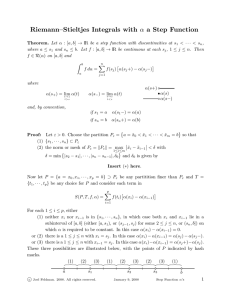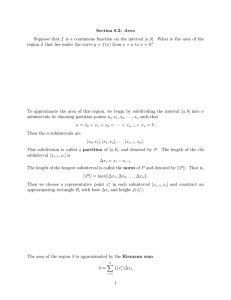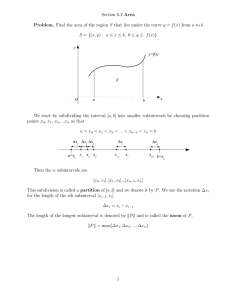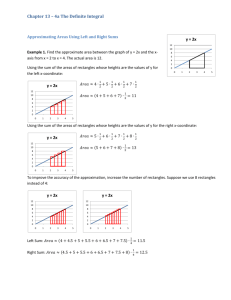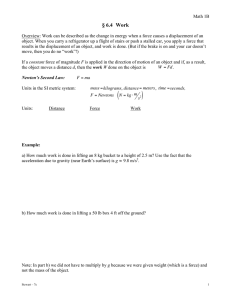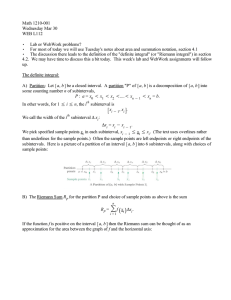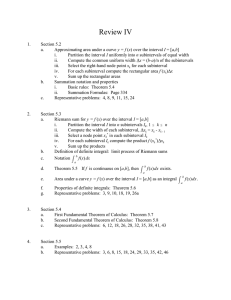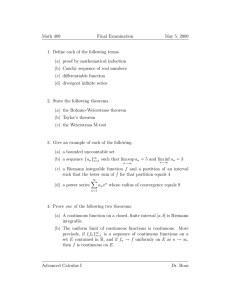advertisement
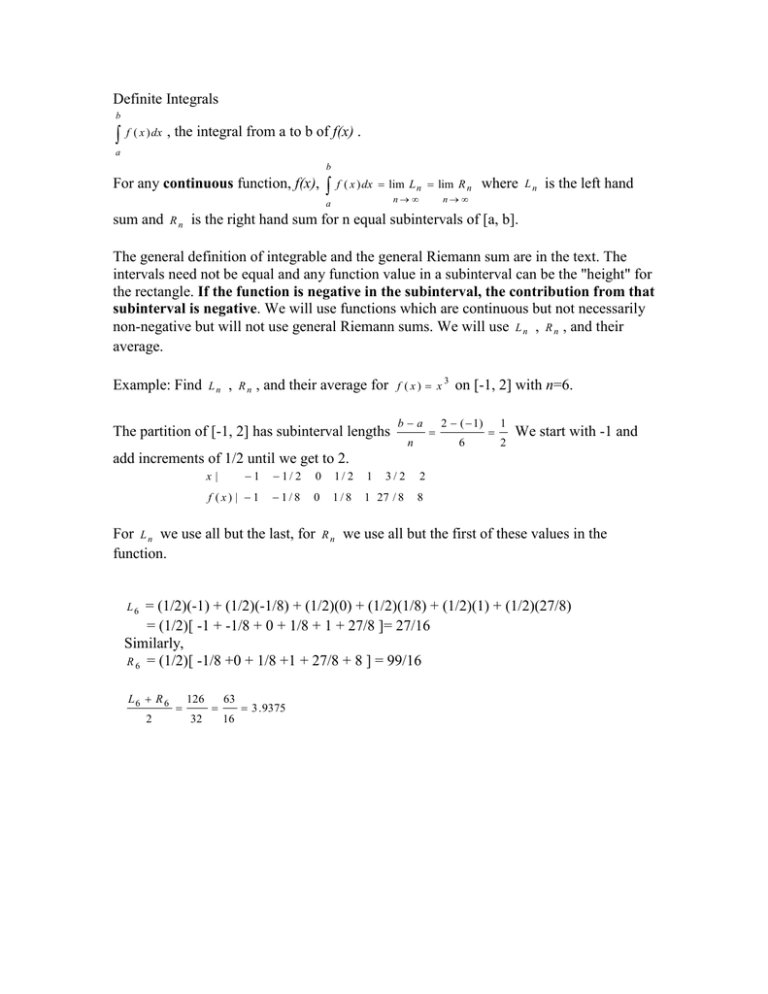
Definite Integrals b f ( x ) dx , the integral from a to b of f(x) . a b For any continuous function, f(x), f ( x ) dx lim L n lim R n n a sum and Rn where Ln is the left hand n is the right hand sum for n equal subintervals of [a, b]. The general definition of integrable and the general Riemann sum are in the text. The intervals need not be equal and any function value in a subinterval can be the "height" for the rectangle. If the function is negative in the subinterval, the contribution from that subinterval is negative. We will use functions which are continuous but not necessarily non-negative but will not use general Riemann sums. We will use L n , R n , and their average. Example: Find Ln , Rn , and their average for The partition of [-1, 2] has subinterval lengths f (x) x ba n 3 on [-1, 2] with n=6. 2 ( 1) 6 1 2 We start with -1 and add increments of 1/2 until we get to 2. 1 1/ 2 0 1/ 2 1 3/2 2 f (x) | 1 1/8 0 1/8 1 27 / 8 8 x| For L n we use all but the last, for function. Rn we use all but the first of these values in the = (1/2)(-1) + (1/2)(-1/8) + (1/2)(0) + (1/2)(1/8) + (1/2)(1) + (1/2)(27/8) = (1/2)[ -1 + -1/8 + 0 + 1/8 + 1 + 27/8 ]= 27/16 Similarly, R 6 = (1/2)[ -1/8 +0 + 1/8 +1 + 27/8 + 8 ] = 99/16 L6 L6 R 6 2 126 32 63 16 3 . 9375 b Properties of f ( x ) dx : a b f ( x ) dx = the Area Above the x-axis under f minus the Area Below the x-axis above f a b b Af ( x ) Bg ( x ) dx A a a b f ( x ) dx b f ( x ) dx a b f ( x ) dx a b c a a c b f ( x ) dx B g ( x ) dx a f ( x ) dx f ( x ) dx
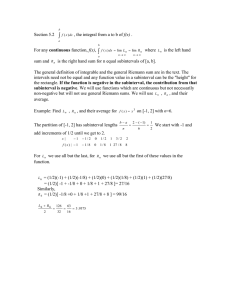
![Student number Name [SURNAME(S), Givenname(s)] MATH 101, Section 212 (CSP)](http://s2.studylib.net/store/data/011174919_1-e6b3951273085352d616063de88862be-300x300.png)
